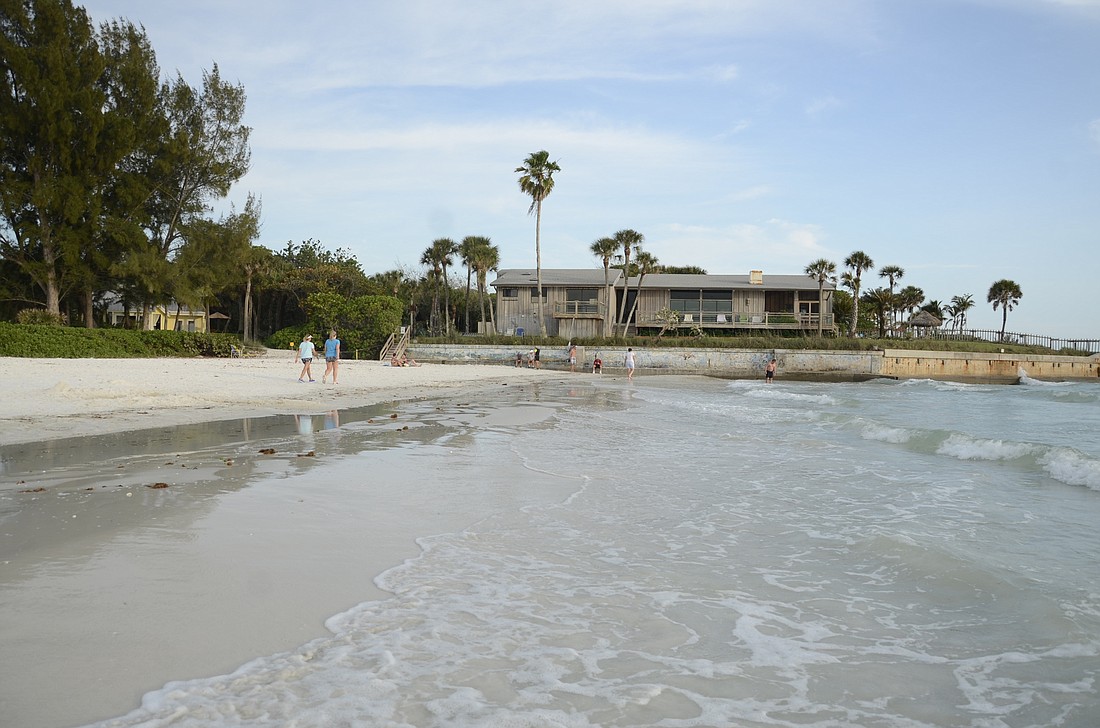- April 25, 2024
-
-
Loading

Loading

Residents on the northern side of Point of Rocks are growing concerned with the rate of erosion at the southernmost spit of sand connected to Siesta Key Public Beach.
Salvatore Russo, a part-time resident who lives near Sarasota County’s beach access 13, has been monitoring the disappearance of sand at Point of Rocks.
Access 13 is considered the public access to Point of Rocks, but Russo said there’s not much beach left.
“At high tide you walk right into the ocean,” Russo said.
Russo, who has lived in this area for about 20 years, said he remembers the county making restorative efforts at this beach about 15 years ago, but it hasn’t been kept up since. Russo remembers the beach used to be a lot wider than it is now.
Access 13 is flanked by private beaches, the Hyatt and Siesta Sands Resort to the north and a private residence to the south, Russo said. But the erosion has eliminated most of the public sand; he owns a rental property near this area, and his tenants have complained there is nowhere to go when they get to the beach because the public area is too small.
“How can you have a beach access and no beach?” Russo said.
The erosion affects more than beach goers—the risk of flooding could become a problem as the protection from the beach disintegrates. Russo also said the beach access is deeded, so the loss of the beach will negatively effect real estate tax revenue.
Russo will meet with Laird Wreford, coastal initiatives manager for the county, Monday, April 27. In the meantime, Russo is putting together a petition to gain traction with local residents.
"We're going to take this to the max," he said, but added, "Why did it have to get this far? It's not like we're asking for something that wasn't there before."
Wreford said the county had not done a renourishment project at this area to his knowledge. Generally, Wreford said, a beach renourishment project needs to have a beach that has at least one and a half miles of erosion. The cause for this minimum is that when sand is laid down for nourishment, some of that sand is lost in the process, and the smaller the area, the more is lost. Also, this area is home to native habitat and coral rock bed, which the county can't cover with additional sand, Wreford said.
Russo and Wreford will visit the site together, during which Russo can show him what areas he is concerned about and maybe the county can come up with a solution. Although a renourishment project for that area is unlikely, Wreford said, there are other protective measures the county could take, such as a dune project.